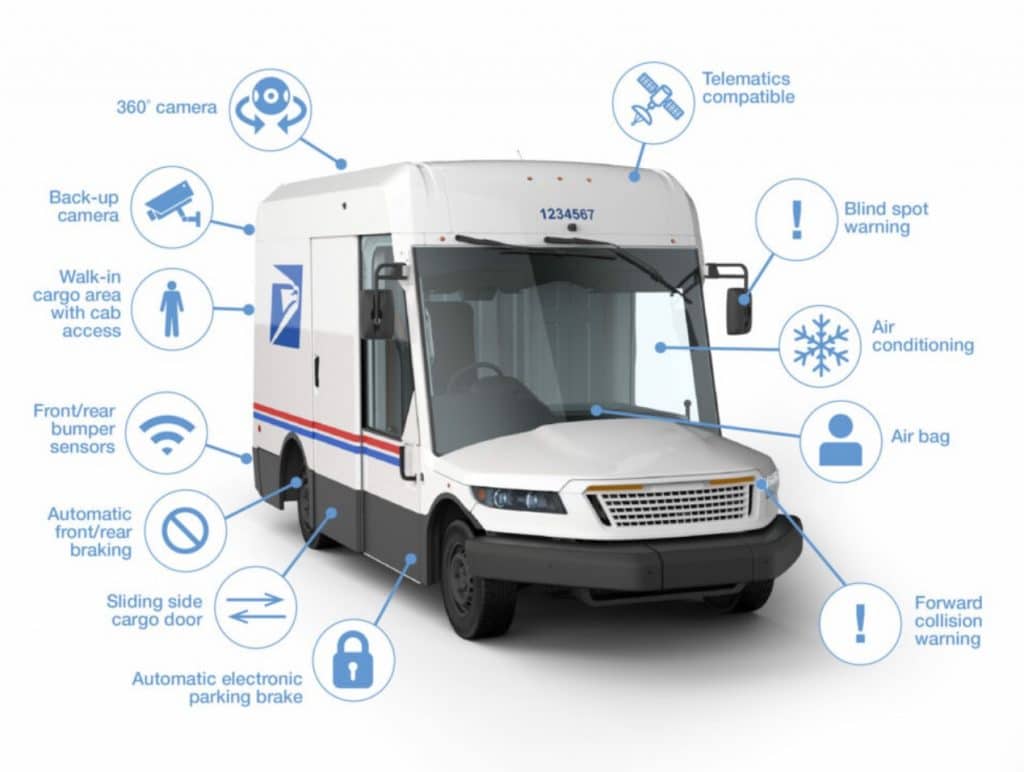On Sunday, February 6, the United States Postal Service (USPS) announced plans to submit an initial order for 5,000 electric delivery vans. The announcement was made to show that the USPS is committed to the fiscally responsible rollout of electric-powered vehicles for America’s largest federal fleet.
The Postal Service also announced plans to achieve 70% fleet electrification within the decade. Postmaster General and USPS Chief Executive Officer Louis DeJoy stated that the Postal Service would be open to increasing its number of electric vehicle orders “should additional funding become available.” The Postmaster tried to elaborate on the USPS’ financial challenges of committing to operating a cleaner Postal vehicle fleet.
“Moreover, comparisons of the Postal Service to private sector multi-national corporations that report yearly profits in the billions of dollars, and that are not required to go to 161 million delivery addresses in all climates and topographies six days per week, are not relevant in view of our perilous financial condition and universal service mission,” DeJoy clarified.
“We will be resolute in making decisions that are grounded in our financial situation and what we can realistically achieve while pushing hard to take delivery of safer, cleaner vehicles by next year. Given our large fiscal deficits and significant financial challenges, Congress is well aware of the additional resources that would be required if Congress would prefer the Postal Service to accelerate the electrification of our delivery vehicle fleet as a matter of public policy,” he explained.
The agency’s recent announcement stated clearly that the Postal Service generally does not receive tax dollars for operating expenses. It relies on postage sales, products, and services to fund its operations.
USPS’ NEW DELIVERY VAN
On February 23, 2021, the USPS announced a 10-year contract with Oshkosh, WI, to manufacture a new generation of U.S.-built postal delivery vehicles. At the time, the agency stated that the new delivery van from Oshkosh would “drive the most dramatic modernization of the USPS fleet in three decades.”
As per the contract’s initial $482 million investment, Oshkosh was supposed to finalize the production design of the agency’s Next Generation Delivery Vehicle (NGDV). The agreement also stated that Oshkosh would assemble 50,000 to 165,000 NGDVs for the USPS. Last month, the NGDV’s design was showcased during CES 2022 in Las Vegas.

BIDEN ADMINISTRATION PUSHES BACK ON THE NGDV
Last week, members of President Joe Biden’s administration sent letters to the Postal Service, urging the agency to reconsider its plans to buy mostly gas-powered vehicles to upgrade its fleet. The agency’s plans to spend up to $11.3 billion on as many as 165,000 new gas-powered delivery vans in the next decade could have major implications for President Biden’s goal to convert federal cars and trucks to clean energy. The Postal Service fleet makes up a third of the US government’s fleet.
Accoring to the USPS, the NGDV is larger and has a more fuel-efficient internal combustion engine compared to the currently deployed Long Life Vehicle (LLV). The NGDV’s fuel economy is 14.7 MPG when air conditioning isn’t running compared to the LLV’s fuel economy of 8.4 MPG, which does not have an AC system. The new Postal delivery van will be fitted with safety features like 360 degree cameras, front and rear braking, and a driver airbag.
However, the USPS also designed the NGDV to accommodate advancements in technology in its 20-year life. The Postal Service declared that the NGDV has a platform that could be equipped with either an internal combustion engine or battery electric drive train.
The agency stated that its cost estimates—presumably referring to costs related to the NGDV—included the price of charging infrastructure. It plans to charge delivery vans in bulk at USPS facilities. The Postal Service is analyzing state and local electrical grid capacity to determine any potential upgrades it needs to implement at the grid-level.
Below is a letter from the White House to the USPS.





